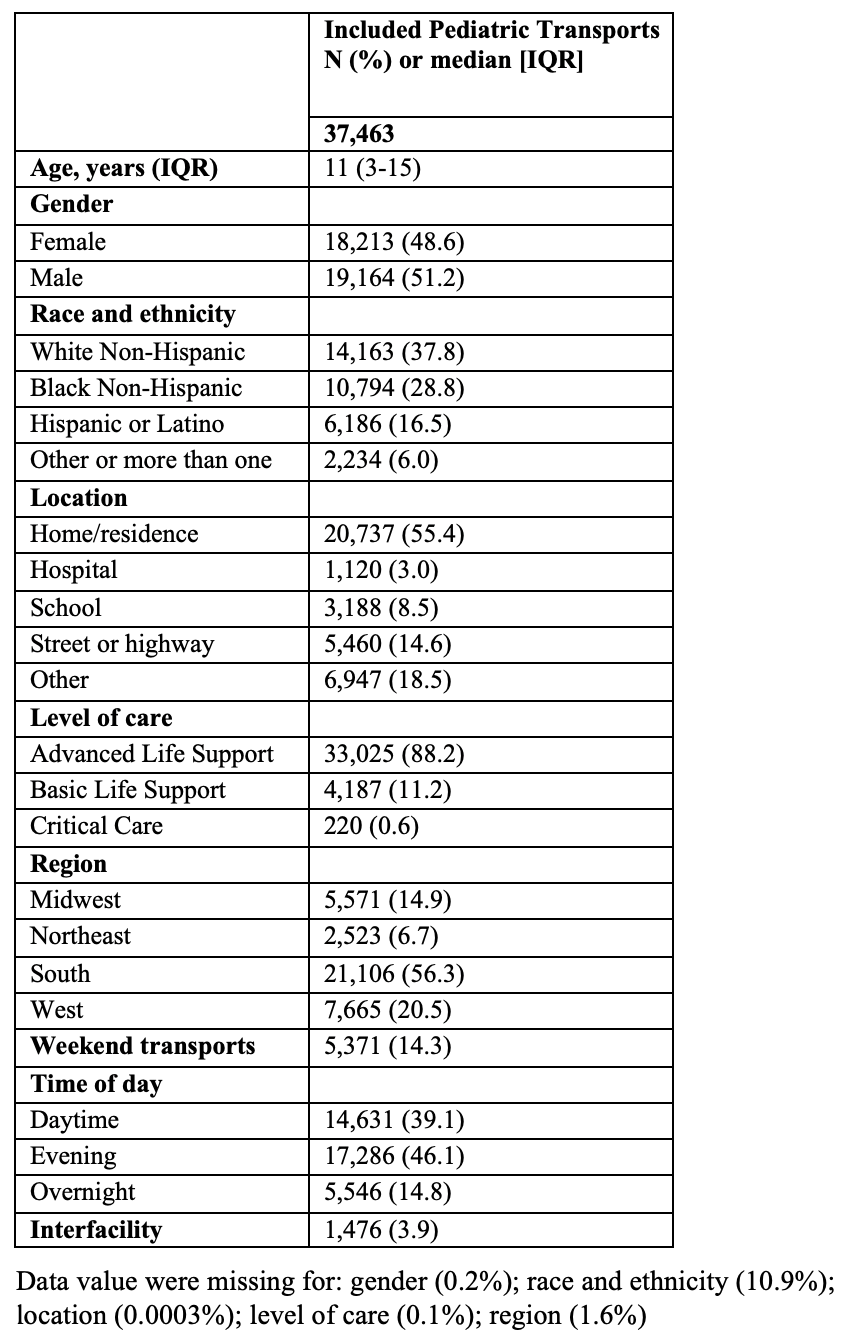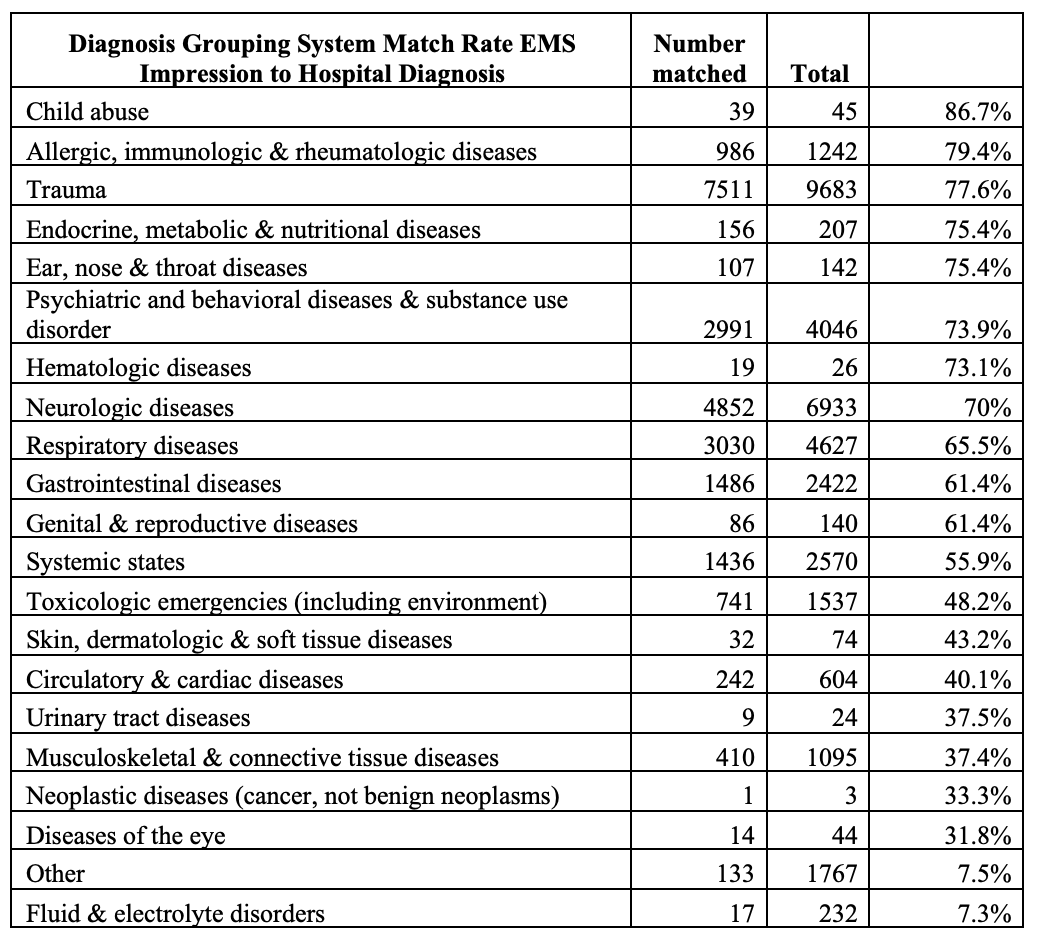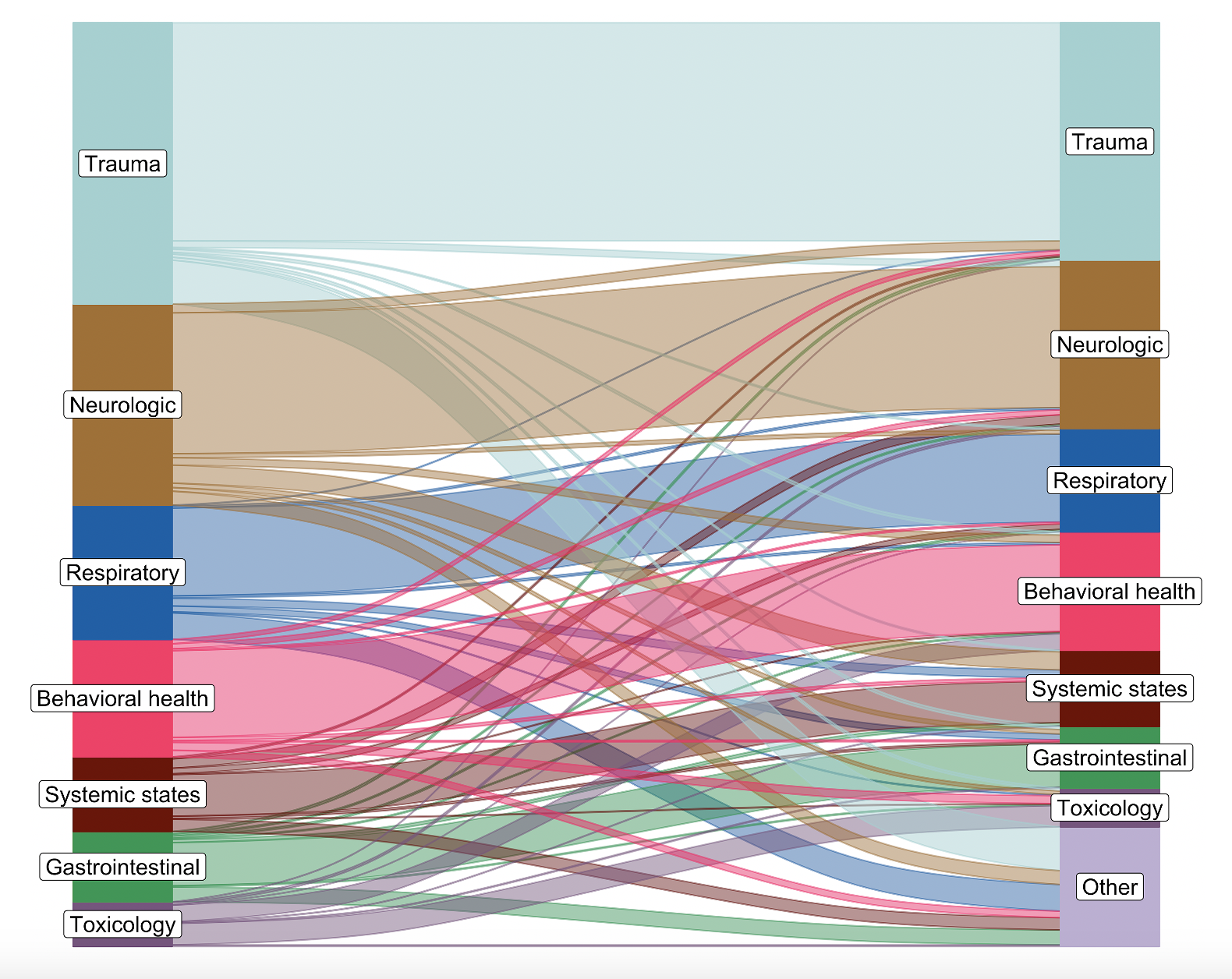Emergency Medicine
Session: Emergency Medicine 7: Emergency Medical Services
210 - Mapping prehospital clinician impression to hospital-based diagnoses in children transported to the hospital by emergency medical services
Sunday, May 5, 2024
3:30 PM - 6:00 PM ET
Poster Number: 210
Publication Number: 210.1719
Publication Number: 210.1719

Tara Funk Corcoran, MD (she/her/hers)
Fellow Physician
Ann & Robert H. Lurie Children's Hospital of Chicago
Chicago, Illinois, United States
Presenting Author(s)
Background: Emergency medical services (EMS) serve a critical role in the delivery of services to children with out-of-hospital emergencies. EMS clinicians’ initial field diagnoses, termed “impressions”, facilitate focused patient assessments, guide the application of prehospital treatment protocols, and help determine transport destination.
Objective: We sought to evaluate the concordance of the EMS clinician impression to a child’s hospital-based diagnosis.
Design/Methods: We retrospectively studied de-identified pediatric ( < 18 years old) scene runs from the 2021 ESO Data Collaborative, a multi-agency prehospital electronic health record repository of linked prehospital and hospital data. We identified the most common hospital-based discharge diagnoses and evaluated for the agreement between EMS impression and hospital-based diagnosis. EMS impressions and hospital-based diagnoses were catalogued using the Diagnosis Grouping System (DGS).
Results: We included 37,463 pediatric patients with linked prehospital and in-hospital data (Table 1). The most common EMS impressions were trauma, neurological diseases, psychiatric, behavioral diseases and substance use disorder, and respiratory diseases. The most common hospital-based diagnoses were seizures, psychiatric, behavioral diseases and substance use disorder, fractures and dislocations, and brain and skull trauma. When stratified by EMS primary impression, hospital-based diagnoses were generally concordant with EMS impressions, with Cohen’s κ=0.59 (Table 2; Figure 1). For the most common EMS impressions of trauma, neurologic diseases, and respiratory diseases, diagnoses match rates all exceeded 65%.
Conclusion(s): We found moderate concordance between EMS primary impression and hospital diagnoses. By evaluating EMS impressions and ultimate hospital diagnoses, pediatric protocols may be streamlined and specific training emphasized in pursuit of improving patient outcomes. Future work is needed to examine instances of discordance and evaluate the impact on patient care and outcomes.



